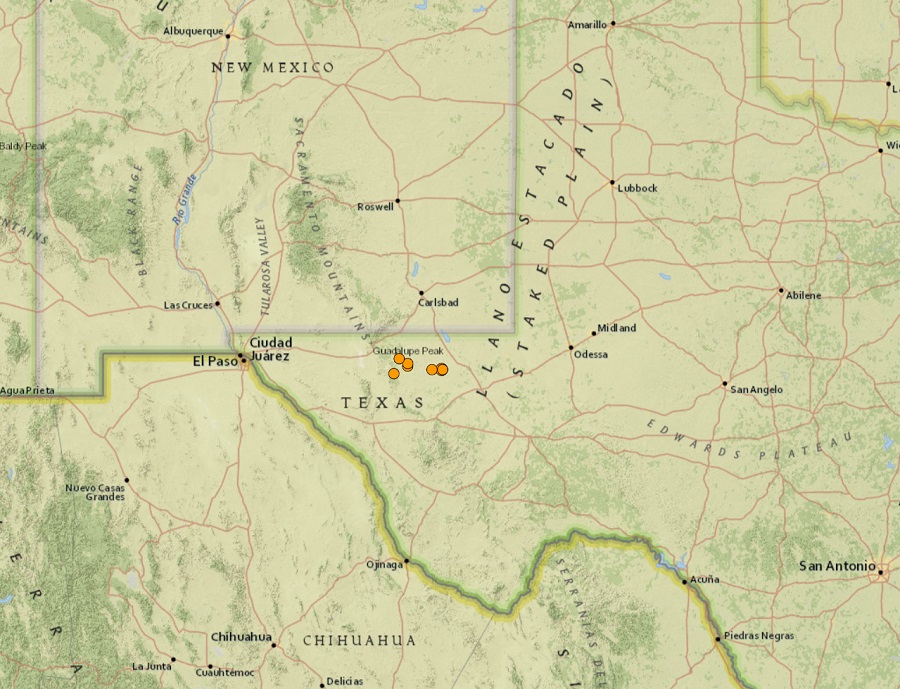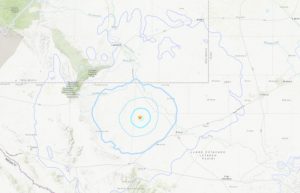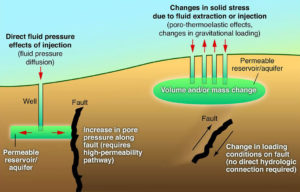
A series of weak to moderate earthquakes shook west Texas this weekend, keeping residents of the Lone Star State south of the state border with New Mexico on their toes.
The first earthquake struck at 8:27 pm local time last night, roughly 36 miles south of near Whites City, New Mexico. That earthquake had a depth of only 2.5 miles. It was followed by an earthquake of equal magnitude from the same general area and depth just 47 minutes later. Just 4 minutes later, a stronger 3.8 earthquake struck at a depth of almost 5 miles, some 23 miles west south west of Mentone, Texas. To date, this was the strongest earthquake in the series.
Just over 2 hours later, another earthquake outside of Mentone, Texas struck, with a magnitude of 2.7 measured.

Through the early morning hours to this afternoon, 4 more earthquakes rocked the area, ranging in magnitude of 2.6 to 2.9.
While there have been no reports of injuries or damage, USGS says the earthquakes had the potential to be felt in west Texas near the New Mexico border.
The area of earthquakes is occuring in a part of the Permian Basin where fracking is common. Fracking, technically known as hydraulic fracturing, is a process in which there’s a high-pressure injection of a fracking fluid into a wellbore to create cracks in deep-rock formations in which natural gas and petroleum products could more easily flow to be captured. By pressurizing and cracking rocks deep underground, earthquakes can occur.

However, the USGS reports that most induced earthquakes are not directly caused by fracking. “The recent increase in earthquakes in the central United States is primarily caused by disposal of waste fluids that are a byproduct of oil production,” the USGS says. “Wastewater disposal wells typically operate for longer durations and inject much more fluid than is injected during the hydraulic fracturing process, making them more likely to induce earthquakes.”
According to USGS, the largest earthquake to be induced by fracking in the U.S. was a 2018 earthquake in Texas that measured as a 4.0 magnitude event.